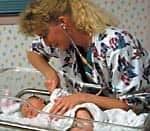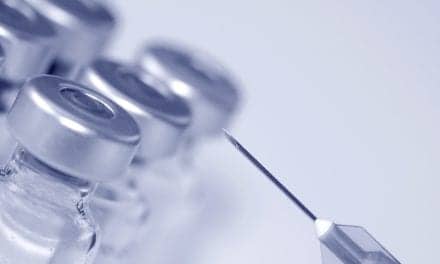A CPAP acclimation trial increases treatment compliance
Nearly every night, sleep disorder centers are on the front line of the CPAP adherence struggle. This is where the CPAP compliance so paramount and sought after by physicians, durable medical equipment carriers, and sleep technicians often begins.
The primary objective of a CPAP acclimation trial (CAT) is to familiarize patients with a properly fitted, comfortable mask and with continuous positive pressure prior to testing. This is important because if a patient requires a split-night study and therapeutic intervention must begin halfway through the night, then that patient will be more receptive to a therapy he or she is somewhat familiar with than a completely foreign one.
A patient’s initial introduction to CPAP therapy requires education and demonstration, which will benefit both patient and sleep technician when CPAP is initiated.
This article will examine the 11 categories that make up the CAT and describe its benefits and the techniques that will best serve each patient for a trial and relate those techniques to the settings found in most laboratory environments.
1: Proper Setting and Education
Seep centers provide patient education in different ways, but the end result is that the patient is comfortable with the hookup application process, the testing procedure, and the possible initiation of CPAP therapy. Although a sleep clinician or referring physician likely has spoken to the patient about sleep testing during consultation, it is beneficial to cover the basics of the sleep laboratory experience.
2: Time Allotted
Sleep technicians need to spend an adequate amount of time acclimating patients by making sure their masks fit comfortably and that individual positive airway pressures are set correctly. Some patients easily adhere to the mask and pressure, while others may require more time. Usually, 15 to 30 minutes is an adequate amount of time for this consultation to be effective, but this is dictated by the patient.
3: Patient Positioning
The acclimation trials are best performed before the overnight test hookup process because at this point patients are not yet restrained by testing equipment or overwhelmed with the procedure.
First, the patient is positioned at the bedside in a chair. That way the technician can begin demonstrating different masks and initiate pressure before the patient is lying down.
4: Masks Montage
Sleep technicians each have their own favorite repertoire of masks. A sleep technician’s experience is a key factor in mask selection because the technician is familiar with the patient’s anatomical features—eg, facial hair or a deviated septum—and feedback from the patient regarding mouth breathing. As mask innovations and concepts keep pace with our growing sleep industry, it is imperative to stay attuned to CPAP technology through such things as in-service training and apply it effectively in a clinical setting.
5: Mask Fitting Approach
Two important exchanges need to take place at this point. The first is that the technician should determine which mask fits the patient best. The technician should ask the patient which mask felt the most comfortable; this is the most important component of mask fitting as comfort is key in compliance at home.
6: Application of Air Pressure and Heated Humidity
CPAP should be started at a minimal level of positive pressure. Most sleep journals and laboratory protocols put this somewhere between 3 and 5 cm H2O. Education is vital at this point. Prior to the patients’ consuming their first breaths of positive pressure, tehcnicians should conduct a quick review to remind them to keep their mouths closed (unless a full-face mask is used) and make them aware that the air they are about to breathe is filtered regular air with a little pressure applied, not oxygen alone. A good recommendation is to have heated humidification initiated at this point and throughout the entire therapeutic portion of the study.
7: Patient Control
Once a technician has properly fitted the mask and is ready to initiate CPAP, there are three important steps:
Step 1: Give the patient control. Technicians should not attach the mask headgear. Instead—being careful to instruct the patient not to block the air diffuser—they should put the mask or the point where the hose attaches to the mask in the patient’s hand and tell the patient to slowly put it over the nose (or nasal-oral area if a full-face mask is used) and begin breathing. Giving patients control allows them to begin when are ready ready and stop and remove the mask when they find it necessary.
Step 2: Practice in intervals. It is a good idea to tell the patient to practice in intervals with each interval increasing in mask-wearing time or pressure. Creating this patient control will make the patient more comfortable with the CPAP device, which promotes adherence. Once the patient becomes comfortable with the procedure while sitting, the technician should ask the patient to try lying down flat on the bed with the device applied and continue breathing.
Step 3: Patient practices alone. A last recommendation is for a technician to step out of the room and let the patient perform this procedure without supervision while sitting or lying on the bed. While this is happening, the technician can assume duties on another patient, check on the patient from the technician control room using audio and video equipment, or make intermittent visits to the patient’s room to see how the patient is coming along.
This is an effective method because by ensuring that the patient assumes responsibility and having control over the CPAP device, the technician can expect a successful CAT.
8: Patient Adaptation to Pressure
Once the patient is comfortable and breathing on the minimal positive pressure (3-5 cm H2O), check the CPAP remote control in the technician control room to see if the patient has excessive mask leaks or mouth breathing. Once the technician has verified that the pressure flow is stable and the mask has a good seal, the pressure should be increased to a moderate level. The objective of this increase is to give the patient a sense of what it is like on CPAP at a level above the minimal trial pressure. As many technicians have observed, patients that fall asleep on a minimal therapeutic pressure sometimes awaken on an increased pressure level alarmed and startled, resulting in a temporary or elongated awakening.
9: Troubleshooting
During any acclimation trial or nocturnal titration with CPAP, problems can develop: Patients frequently report difficulties exhaling, struggling to get enough air, being unable to catch their breath, and not managing to breathe only through the nose. These problems can result in the escalation of anxiety and discontinuation of CPAP use. If the problem is inadequate air pressure or the patient struggling to breathe, the technician might consider adjusting the pressure on the CPAP and find the setting where the patient is comfortable and receptive to a pressure that he or she could relax and fall asleep on.
Other options are available for patients who complain of difficulties exhaling on continuous pressure. For example, the technician can switch the patient to bilevel ventilation to provide reduced exhalatory pressure relief. Newer clinical ventilation systems in sleep laboratories may have other innovative options for flexibility or optimal humidification delivery to benefit certain patients depending on the basis of their complaints.
10: Time Management
Although all of the procedures mentioned in this article may seem like a lot to do in the little time allotted for a technician with a 2:1 patient-to-technician ratio, a CAT may be time well spent. Depending on the patient’s ability to adapt to CPAP, a CAT can last anywhere from 10 to 45 minutes.
A rarely mentioned primary skill of a sleep technician is patient time management. Taking for granted that most technicians are performing two studies per night and patients are staggered at different times when they are scheduled for their sleep studies, time utilization with each patient is a skill that experience in the field will prove priceless.
11: Documentation
Since a CAT is considered to be therapeutic intervention, documentation is recommended but not required. Documentation wil ensure that the minimal pressure and increased pressure to which the patient was acclimated and time spent on the process is in the permanent record.
Summary
The intent of CAT is to avoid slapping an unfamiliar mechanism on a patient in the middle of the night and expecting the best outcome with limited education and no acclimation process in place. For patienst to be successful with CPAP therapy at home, they must first be comfortable and receptive to CPAP therapy at the sleep laboratory. Comfort is the key to a compliant patient.
Jeffrey B. Wathen, RPSGT, is a sleep laboratory supervisor at St. Anthony’s Medical Center, St Louis.









